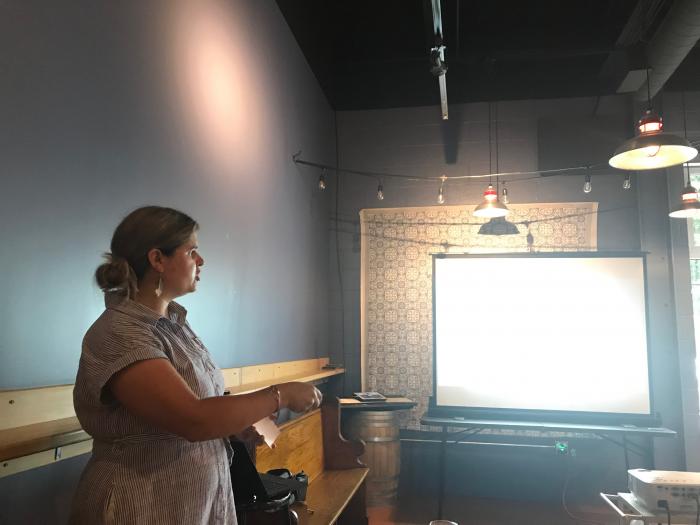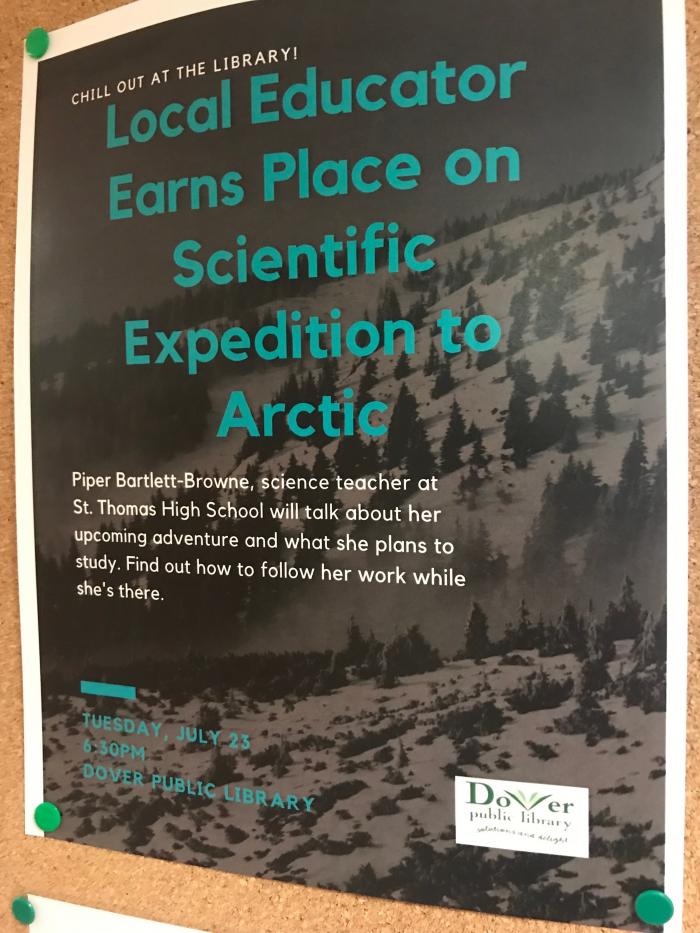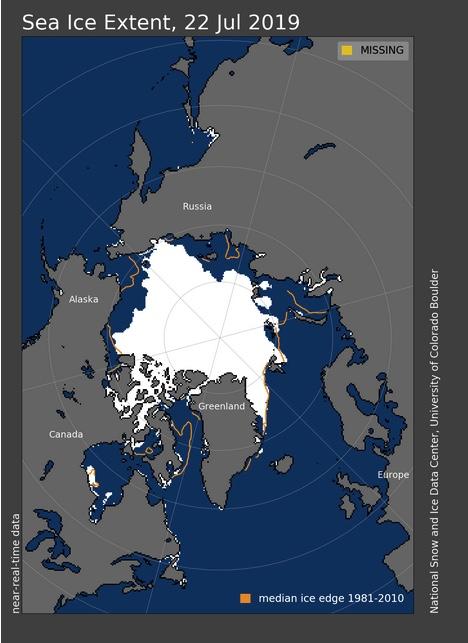Countdown t-minus 5 days! As July 29th approaches, I am getting more and more excited about the expedition. My outreach in the community has ramped up and I have been talking to a lot of great people. I had an activities table at the Dover Children's Museum where children mapped the journey of the USCGC Healy and learned about polar animal adaptations with the blubber mitt.
 Polar animal activities table.
Polar animal activities table.
I also engaged with the community at Tributary Brewing and at the Dover Public Library. We talked about the PolarTREC program, the expedition, and climate change.
 Piper Bartlett-Browne giving an informational presentation at Tributary Brewing.
Piper Bartlett-Browne giving an informational presentation at Tributary Brewing.
 A flyer for Piper Bartlett-Browne's presentation at the Dover Public Library.
A flyer for Piper Bartlett-Browne's presentation at the Dover Public Library.
As my departure date to Nome gets closer, I have been following the sea ice extent data on the National Snow and Ice Data Center website. This organization is a great resource for getting polar data and seeing what's happening in the arctic. July is traditionally the month that sees the highest rate of sea ice melt. Between 1981 and 2010, the average rate of sea ice melt was 80,000 square miles per day. In recent years, we have started to see a rate of 100,000 square miles or more per day. The image below shows where the sea ice in the arctic is as of July 22, 2019. Although they are seeing decline, it is not projected to be as extreme as 2012, which is the lowest on record. It will be very interesting to be aboard the Healy and see this firsthand.
 Sea ice extent on July 22, 2019.
Sea ice extent on July 22, 2019.
A Question From the Crow's Nest
What is the average depth of the Chukchi Sea?
Answer from the previous post: Nome is located on the Seward Peninsula!


Comments
Add new comment